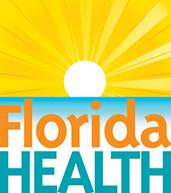It's a New Day in Public Health.
The Florida Department of Health works to protect, promote, and improve the health of all people in Florida through integrated state, county, and community efforts.
Vaccine Preventable Diseases
Florida Health
Disease Control- DiseaseControl@flhealth.gov
- 850-245-4444
-
Florida Health
4052 Bald Cypress Way
Tallahassee, FL 32399

Hepatitis A

- Hepatitis A activity increased from last month and was below the previous 5-year average
- 16 cases were reported in December
Pertussis

- Pertussis activity decreased from last month and was above the previous 5-year average
- 91 cases were reported in December
Meningococcal Disease

- Meningococcal disease activity decreased from last month and was below the previous 5-year average
- 1 case was reported in December
Varicella

- Varicella activity decreased from last month and was above the previous 5-year average
- 47 cases were reported in December
Although vaccinated individuals can still become infected with diseases like pertussis or varicella, in general, those who have received at least one dose of vaccine have less severe outcomes than those who have not.

Unvaccinated children are at increased risk of vaccine-preventable diseases like mumps, pertussis, and varicella.
The proportion of children age 5–17 years with new exemptions are increasing each month. Statewide, the estimated prevalence of exemptions among children age 5–17 years old is 6.21% with individual counties ranging from 1.59 – 14.74%.
The rate of religious exemptions is likely higher than the rate presented in this report. This is due to eligible persons with religious exemptions who have opted out of Florida SHOTS and persons who have had their religious exemptions processed outside of the Florida SHOTS system. The religious exemptions map those registered in Florida SHOTS through December 31, 2024.



Connect with DOH